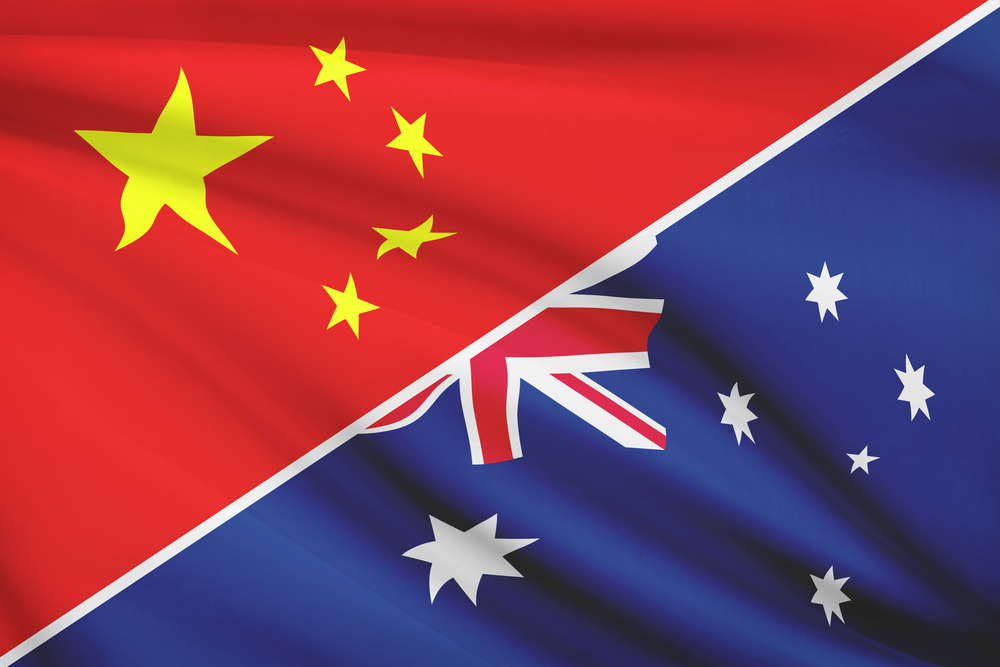The Australia-China FTA a ‘Shot in the Arm’ for the Aussie Economy

Please note that we are not authorised to provide any investment advice. The content on this page is for information purposes only.
Australian politicians often say ‘Australia-China relations are crucial to Australia’s development and prosperity’. Many hope the China–Australia FTA, due to be signed later this year, will be the shot in the arm Australia’s economy needs.
Australian politicians often say ‘Australia-China relations are crucial to Australia’s development and prosperity’. Many hope the China–Australia FTA, due to be signed later this year, will be the shot in the arm Australia’s economy needs.
However, very few people know how to capitalise on this injection. Australia has a track record of underutilising its FTAs, and Australia needs more Asia-capable people in public and private leadership roles so that it can fully embrace the risks and rewards of its increasing, and increasingly necessary, exposure to the Chinese and other Asian economies.
A recent policy paper by the Australia–China Young Professionals Initiative (ACYPI) suggests that many young professionals have a highly evolved Asia skillset. But many departments and businesses, and their respective leaders, still suffer from ‘Asia-apprehension’.
Asia-apprehension starts small — a lack of understanding or an inability to talk clearly and thoughtfully about Asia. Nevertheless, it quickly grows into a big handbrake on the ‘Asia potential’ of Australian business. Left unresolved, the apprehension quickly becomes an inability to ‘sell’ the business case for new Asian opportunities. Eventually, this may lead to a parochial and risk-averse organisational culture.
Young professionals believe the problem is at the top. Organisation leaders must learn to leverage their Asia talent. Australia’s long-term prosperity depends on the next generation of young professionals with the skills to design, manufacture, and market and sell Australian products and services to the growing Asian middle class.
Australia needs confident, far-sighted leadership aimed at engaging with China and Asia. Young Australian professionals clearly focus on China and the Asian region and they want more action from government and business.
The 2012 Asian Century White Paper helped change the rhetoric of China-engagement. But in 2013, more than 60 percent of survey respondents had neutral or no sense of the White Paper’s core recommendations. In 2014, 71 percent felt they had no leadership support for gaining Asian work experience.
ACYPI suggests two potential answers to this problem of Asia-apprehension.
Government and business must be proactive in taking the China-engagement rhetoric from paper into practice. China-literacy is not necessary, but confidence in engaging with China is essential. Business and government leaders must recognise a China strategy is a long-term investment in their social capital. Leaders should build the Asia literacy of their own staff and promote leaders with strong Asian ties or backgrounds. It is these people that open doors and unlock opportunities. During key executive meetings, organisations should be asking, how is our China and Asia strategy reflected in today’s discussion? If the answer is ‘we don’t know’ then the wrong people are in the room.
Australia also needs a bottom–up solution. Education (and continuing education) is crucial. There is a growing perception that China scholarships and funding have reached a saturation point. Support for such initiatives declined by more than 20 percent from 2013 to 2014. The core challenge identified by respondents is to increase applicants for these scholarships and focus on improving cultural knowledge in the broader community. State governments should introduce compulsory Asian language training from kindergarten to Year 10. Governments should also introduce tax-deductible continuing education policies to incentivise Australians to take up Asia literacy and cultural awareness courses.
But the solution to the Asian language problem is also one of demand. If parents demand, their children learn an Asian language instead of a European one then schools should respond. Italian is a lovely language, but Australian exports to Italy are only AU$1.2 billion (US$937 million). By contrast Australian exports to Indonesia are valued at almost AU$7 billion (US$5.4 billion). Indonesia’s GDP grew by roughly 5 percent in 2014. By contrast, Italy’s GDP was roughly unchanged over the same period. Based on the numbers alone perhaps parents should be more proactive by selecting schools offering Indonesian.
The China–Australia FTA is not a panacea. The cure will come from real people with the skills to market Australian products and services into the growing Asian middle class. Whenever businesses and government discuss Australia’s competiveness and future productivity, China (and Asia more broadly) must be part of the discussion. Australian companies can take advantage of low-hanging fruit to support Asian literacy among their staff. Investment in social capital now will yield immense dividends in the medium to long term, and policy settings should reflect and incentivise such investment.
Australia should cure its Asia-apprehension is republished with permission from East Asia Forum




